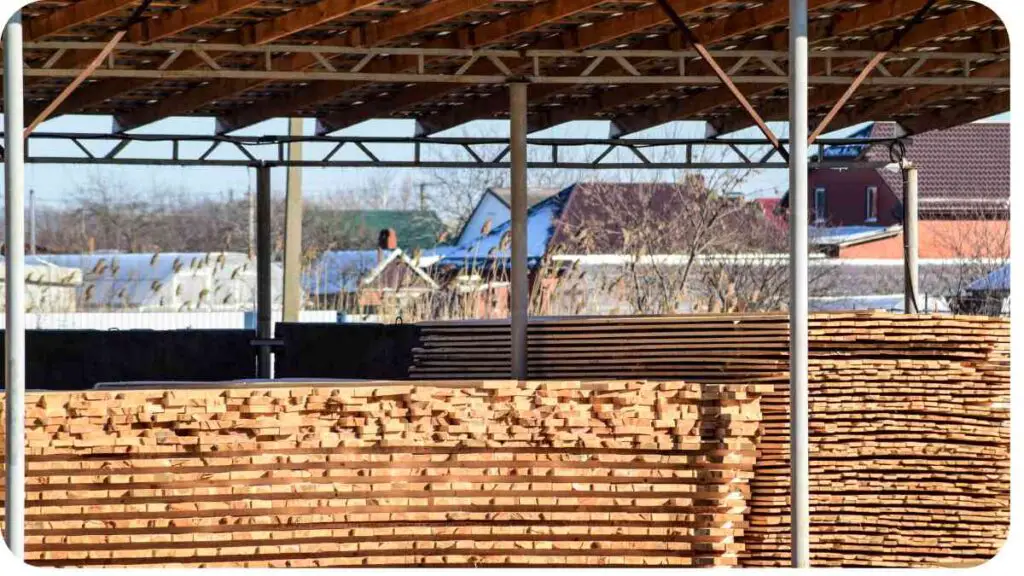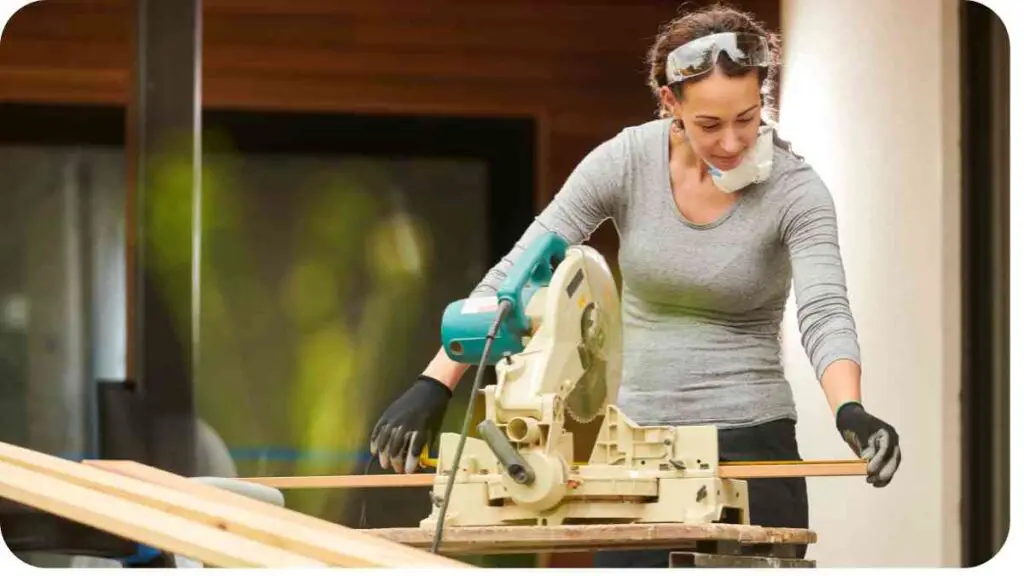Canopies provide valuable shade and protection from the elements, but even the most durable canopies can develop holes over time due to wear and tear.
Whether it’s a tear from a strong gust of wind or a puncture from a sharp object, knowing how to repair a hole in your canopy can extend its lifespan and save you money. In this guide, we’ll walk you through the steps to fix a hole in a canopy, regardless of its size or material.
| Takeaways |
|---|
| 1. Regularly inspect your canopy for signs of damage to address issues promptly. |
| 2. Proper storage when not in use can prevent unnecessary damage and prolong the life of your canopy. |
| 3. Secure installation and anchoring can prevent damage from strong winds and sudden gusts. |
| 4. Avoid placing your canopy near sharp objects or rough surfaces to prevent punctures and tears. |
| 5. Implement preventive measures such as using protective covers and applying waterproof sealant. |
| 6. Handle your canopy with care during setup and takedown to avoid unnecessary strain on the fabric and frame. |
Understanding Canopy Materials

Before diving into the repair process, it’s essential to understand the materials commonly used in canopies. Different materials require different repair techniques and tools. Here’s a brief overview:
| Material | Characteristics |
|---|---|
| Polyester | Lightweight, water-resistant, and durable |
| Vinyl | Heavy-duty, waterproof, and UV-resistant |
| Canvas | Breathable, durable, and natural |
| Nylon | Lightweight, strong, and quick-drying |
Each material has its strengths and weaknesses, so it’s crucial to identify the type of canopy you’re working with before proceeding with repairs.
Assessing the Damage
Before you start the repair process, assess the extent of the damage to your canopy. Look for holes, tears, or punctures, and determine their size and location. Small holes can often be patched quickly, while larger tears may require more extensive repair work.
When assessing the damage, consider the following factors:
- Size of the hole or tear
- Location on the canopy (center, edge, seam)
- Material of the canopy
- Cause of the damage (weather, accidents, wear)
By understanding the scope of the damage, you can better determine the most appropriate repair method.
Tools and Materials Needed
Repairing a hole in a canopy requires the right tools and materials. Here’s what you’ll need:
| Tools | Materials |
|---|---|
| Scissors | Patching material |
| Seam sealer | Adhesive or glue |
| Needle and thread | Fabric tape |
| Patching iron | Waterproof sealant |
| Heat gun | Reinforcement fabric |
Having these tools and materials on hand will streamline the repair process and ensure a successful outcome.
Step-by-Step Repair Process
Now that you have assessed the damage and gathered your tools and materials, it’s time to start the repair process. We’ll guide you through three common repair scenarios:
- Patching a Small Hole
Small holes in canopies can often be quickly patched using adhesive or fabric tape. Follow these steps:
| Step | Instructions |
|---|---|
| 1 | Clean the area around the hole with a damp cloth |
| 2 | Cut a patching material slightly larger than the hole |
| 3 | Apply adhesive or fabric tape to the patching material |
| 4 | Press the patch firmly onto the hole and smooth out any wrinkles |
- Repairing Tears and Larger Holes
Larger tears and holes may require more extensive repair work using reinforcement fabric and a patching iron. Here’s what to do:
| Step | Instructions |
|---|---|
| 1 | Trim any frayed edges around the tear or hole |
| 2 | Cut a piece of reinforcement fabric slightly larger than the damaged area |
| 3 | Place the fabric over the tear or hole |
| 4 | Using a patching iron, apply heat to bond the fabric to the canopy |
- Fixing Seams and Edges
Seams and edges are common areas for wear and tear on canopies. To reinforce these areas, follow these steps:
| Step | Instructions |
|---|---|
| 1 | Apply seam sealer along the seam or edge of the canopy |
| 2 | Use a heat gun to activate the seam sealer and create a waterproof seal |
| 3 | Allow the sealer to dry completely before using the canopy |
Following these step-by-step instructions will help you effectively repair holes in your canopy and ensure its continued functionality and durability.
Prevention Tips
While knowing how to repair a hole in your canopy is essential, taking preventive measures can help prolong its lifespan and reduce the need for frequent repairs. Here are some tips to prevent holes and damage to your canopy:
- Regular Inspection: Perform routine inspections of your canopy to check for signs of wear and tear, such as fraying seams or weak spots. Address any issues promptly before they worsen.
- Proper Storage: When not in use, store your canopy in a dry, clean area away from harsh weather conditions and potential hazards. Proper storage can prevent unnecessary damage and prolong the life of your canopy.
- Secure Installation: Ensure your canopy is properly installed and securely anchored to prevent it from being blown away by strong winds or damaged by sudden gusts. Use sturdy anchors and follow manufacturer guidelines for installation.
- Avoid Sharp Objects: Be mindful of the environment where you set up your canopy and avoid placing it near sharp objects or rough surfaces that could puncture or tear the fabric.
- Use Protective Covers: Consider using protective covers or cases when transporting or storing your canopy to shield it from scratches, abrasions, and other potential damage.
- Regular Cleaning: Keep your canopy clean by regularly removing dirt, debris, and stains. Use mild soap and water to gently clean the fabric, and avoid harsh chemicals that could weaken or degrade the material.
- Apply Waterproof Sealant: Apply a waterproof sealant to the canopy fabric periodically to enhance its water resistance and protect it from moisture damage. Reapply the sealant as needed, especially after prolonged use or exposure to harsh weather conditions.
- Handle with Care: When setting up or taking down your canopy, handle it with care to avoid unnecessary strain or stress on the fabric and frame. Follow proper procedures to minimize the risk of damage during assembly and disassembly.
By implementing these preventive measures, you can reduce the likelihood of holes and damage to your canopy, saving you time and money on repairs in the long run.
FAQs about Canopy Repair

Here are answers to some common questions about repairing canopies:
Can I repair a canopy made of any material?
- While many repair techniques are applicable to various canopy materials, it’s essential to consider the specific characteristics and requirements of the fabric you’re working with. Some materials may require specialized repair methods or adhesives.
How long will a canopy repair last?
- The longevity of a canopy repair depends on various factors, including the severity of the damage, the quality of the repair materials and techniques used, and how well the canopy is maintained and cared for afterward. Properly executed repairs can extend the lifespan of a canopy significantly.
Is it worth repairing a severely damaged canopy, or should I replace it?
- In some cases, particularly if the damage is extensive or the canopy is old and worn, it may be more cost-effective to replace the canopy rather than attempting repairs. However, for minor damage or newer canopies, repair can be a viable option to extend its usability.
Can I repair a canopy myself, or should I seek professional assistance?
- Minor repairs, such as patching small holes or reinforcing seams, can often be done DIY with the right tools and materials. However, for more complex or extensive damage, or if you’re unsure about the repair process, it’s advisable to consult a professional canopy repair service.
Conclusion
Repairing a hole in a canopy is a manageable task with the right tools, materials, and know-how. By following the step-by-step repair process outlined in this guide and implementing preventive measures to protect your canopy from damage, you can ensure its continued functionality and durability for years to come.
Don’t let a small hole dampen your outdoor enjoyment take action to fix it and enjoy your canopy with confidence.
In the next section, we’ll dive into real-world examples and success stories of canopy repair, providing further insights and inspiration for your own repair endeavors. Let’s explore some fascinating case studies and expert tips from canopy repair specialists.
Further Reading
Here are some additional resources for further information on repairing canopies:
- Quictents: How to Repair Your Instant Canopy: This comprehensive guide provides answers to common questions about repairing instant canopies, covering topics such as patching holes and fixing tears.
- American Tent: Step-by-Step Guide to Fixing a Ripped Canopy: Learn the detailed process of repairing a ripped canopy with this step-by-step guide from American Tent. From assessing the damage to applying patches, this resource covers it all.
- HomeTalk: How Can I Repair a Rip in My Canvas Gazebo?: Get DIY tips and advice on repairing a rip in your canvas gazebo with this helpful article from HomeTalk. Discover effective techniques for patching canvas and extending the life of your gazebo.
FAQs
How do I assess the damage to my canopy?
To assess the damage to your canopy, carefully examine the fabric for any holes, tears, or punctures. Note the size and location of the damage and consider the material of the canopy.
What tools and materials do I need for canopy repair?
Common tools and materials for canopy repair include scissors, patching material, adhesive or glue, seam sealer, needle and thread, fabric tape, patching iron, heat gun, and waterproof sealant.
Can I repair a canopy made of any material?
While many repair techniques are applicable to various canopy materials, it’s essential to consider the specific characteristics and requirements of the fabric you’re working with.
How long will a canopy repair last?
The longevity of a canopy repair depends on various factors, including the severity of the damage, the quality of the repair materials and techniques used, and how well the canopy is maintained and cared for afterward.
Is it worth repairing a severely damaged canopy, or should I replace it?
In some cases, particularly if the damage is extensive or the canopy is old and worn, it may be more cost-effective to replace the canopy rather than attempting repairs. However, for minor damage or newer canopies, repair can be a viable option to extend its usability.

I am Hellen James, a professional handywoman with expertise in improving home and garden spaces by using pergolas, gazebos, and tents.


